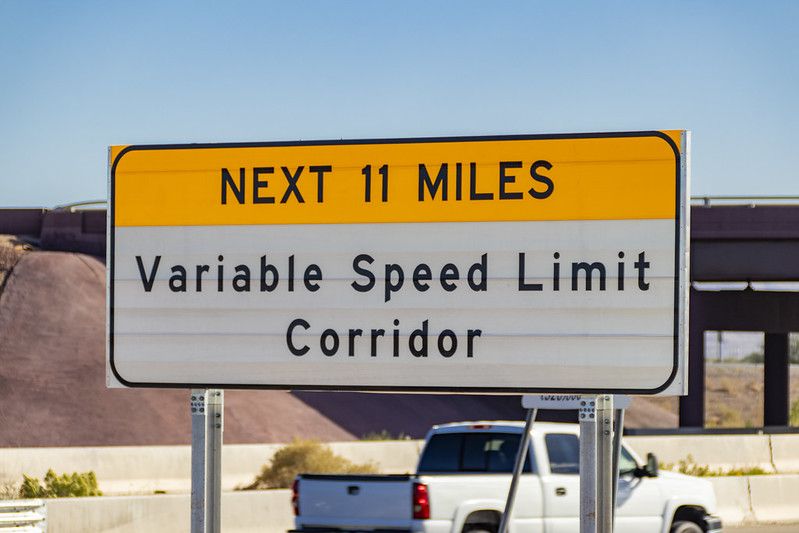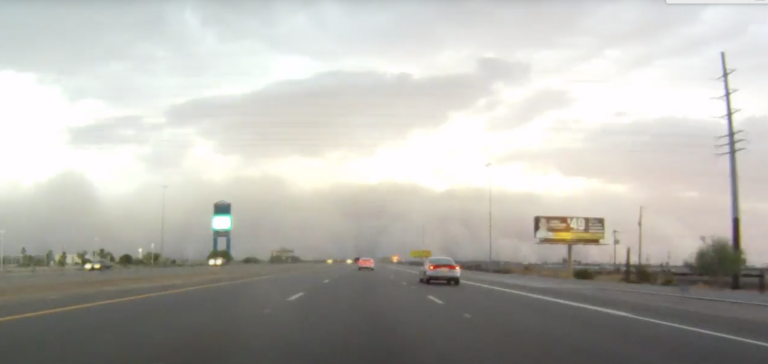The technologies clustered along 10 miles of Interstate 10 between Phoenix and Tucson, an area prone to sudden blowing dust, combine to create a warning system that’s ready to quickly tell drivers to slow down for safety when windblown dust reduces visibility.
After completing a 30-day test period, the system is now operational in time for the official 15 June start of monsoon season, the peak time for severe storms that create hazardous driving conditions.
While drivers should be familiar with dust storms and warnings to “Pull Aside, Stay Alive”, those passing through the detection and warning zone between mileposts 209 and 219 should be ready for the new possibility of reduced speed limits and other warnings.

Drivers will first notice signs saying “Variable Speed Limit Corridor.” Soon after, a series of programmable speed limit signs every 1,000 feet can change the legal speed limit from 75 mph to as low as 35 mph. Additional variable speed limit signs are placed every 2 miles.
Overhead electronic message boards in and near the corridor will alert drivers to blowing dust and warn them to slow down. Speed feedback signs will inform drivers of their actual speeds.
Those highly visible elements of the dust detection system are supported by mostly invisible technologies that work automatically.
Thirteen visibility sensors mounted on posts along the freeway use light beams to determine the density of dust particles in the air. Once visibility drops to certain levels, the system activates overhead message boards and the variable speed limit signs.
The sensors are complemented by a weather radar on a 20-foot tower at I-10 and State Route 87. It can detect storms more than 40 miles away, providing additional warning of incoming storms to ADOT and forecasters at the National Weather Service.
All this technology is monitored by ADOT’s Traffic Operations Center in Phoenix, where staff can see real-time information on conditions such as the speed and flow of traffic. Closed-circuit cameras provide visual confirmation of conditions along the roadway and in the distance.
The roughly US$6.5 million system was funded in part by a US$54 million federal FASTLANE grant ADOT received for I-10 projects that widened sections between Eloy and Picacho, and between Earley Road and Interstate 8, to three lanes in each direction. As a pilot project, the system will advance ADOT’s knowledge of whether similar technologies would be effective along other Arizona highways.
The technology is backed by common sense advice in ADOT’s PullAsideStayAlive.org campaign.





